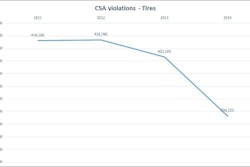By Lynn Buck, MacKay & Company
I do a little home garage wrenching when I find the time. The other day I ordered a sensor online and when it arrived, I was dismayed to find the necessary o-ring did not come with it; I should have ordered a second part number. This delayed my repair and left me frustrated that the online site did not list the gasket as a complimentary part or simply include it in the box.
Granted, I should have studied the description a little more …
Coming from the parts business, I know why this happens. The distributor gets the sensor from one supplier and the o-ring from another. Parts come in separate shipments and are then placed in separate bin locations in their parts warehouse.
The computer doesn’t know they belong together unless someone tells it.
In this increasingly competitive market, distributors need to set themselves apart from the competition. One way is to implement parts kitting solutions for your customers. If you hand a customer a more convenient way to do something, chances are, if it is a good value, they’ll take it.
Step One: Do a detailed analysis of your sales data. Where do customers buy related parts together on a regular basis.
Offer the customer the opportunity to purchase those parts as a kit.
For example, does a customer seem to continuously purchase a water pump and gasket as separate line items? Why? You know and they know the gasket is needed, so why not sell it as one SKU? This saves your customer time in ordering and from hunting down yet another part both in your parts catalog or website as well as in their own parts department.
Other potential kit ideas:
- PM kits: Create different SKUs by recommended maintenance intervals. Depending on the interval, include oil, air, fuel filters and other necessary items like belts, drain plug washers, etc.
- Wheel bearing kits: Seals and bearings, castle nut, pin; per wheel end or per axle
- Brake kits: Calipers, rotors, pads; rotors and pads and related hardware
- Any part that requires a gasket: Include a new gasket
- Parts that require new bolts or fasteners: Include the bolts or fasteners
Step Two: Interview your customer. With what tasks are they having a particular problem? Which jobs have become costlier? Become a solution provider.
In my prior life at a parts distributor, we had a customer who had a lot of drum brakes in their light-duty truck fleet, but didn’t like the downtime necessary to change them out piece by piece. We set up a rebuilding shop in our parts warehouse and rebuilt their drum brakes—repainting the backing plates and fastening new shoes and hardware.
The new SKU became a bolt-on solution. It cost more than the individual parts, but the new solution saved in labor and downtime.
Step Three: Analyze your inventory. Do you have excess stock in brake pads? Putting parts into a kit can help move excess inventory. What parts should be sold together?
Kits may cost a little more in your upfront labor and should be priced accordingly. Most of the kits listed above are parts that would have been placed in the same box for shipment anyway. You are just doing that upfront instead of on the packing line. So, in most instances the incremental cost should be negligible.
The ROI has to be there, but convenience, lower labor cost and less downtime are universally an easier sell.
Lynn Buck, information technology analyst, joined MacKay & Company in November 2012. His background includes more than 15 years of data analysis and reporting in a variety of settings. Most recently, he has performed the roles of pricing manager and inventory manager for two aftermarket parts distributors. Prior to that, he analyzed markets for new parts and service locations for Navistar.










